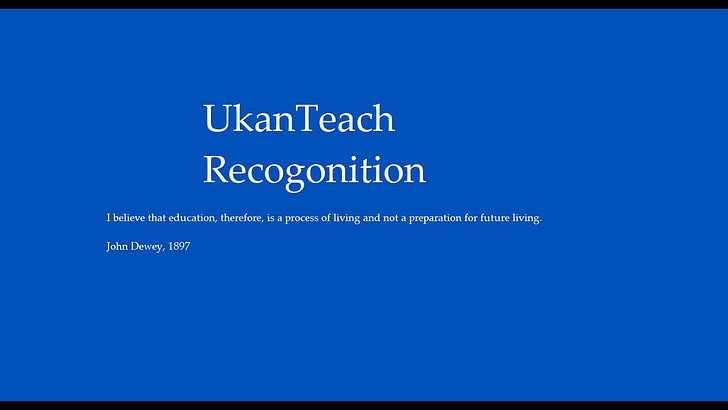I Watched My Own Education Pipeline Collapse—Now It’s Happening Nationwide
NIH Effects: The Gutting of Higher Education
I know firsthand what it means when an essential education program is deemed “not profitable enough” to survive. I was part of UKanTeach, a groundbreaking initiative at the University of Kansas designed to train the next generation of STEM teachers. It wasn’t just a program—it was a pipeline, a direct path to placing highly skilled math and science educators into classrooms across the state, especially in communities that needed them most.
Then, in 2019, KU cut it. $2 million. That’s all it would have taken to sustain a program that could have shaped entire generations of STEM students. But because it didn’t fit into a financial model that prioritized short-term gains over long-term impact, it disappeared. And with it, an entire support system for future scientists and engineers collapsed.
Now, I’m watching the same thing play out on a national scale—except this time, it’s not just one program being wiped out. It’s entire universities scrambling to survive.
Universities Under Siege: The Real Cost of Budget Cuts
Higher education isn’t just facing “budget constraints”—it’s being deliberately gutted. Across the country, universities are laying off faculty, eliminating programs, and slowing down critical research. The numbers are staggering, but the impact goes deeper than financial losses. When programs disappear, when faculty leave, when research stalls—entire academic fields shrink. Students lose access. Knowledge disappears.
Haskell Indian Nations University (KS): 20-30% of employees laid off, leaving courses unstaffed and student organizations without faculty sponsors. The Welcome Back Powwow postponed, the Entrepreneurial Summit canceled. The cultural and academic heartbeat of the school is at risk.
Boston University & MIT (MA): Hiring freezes. Research funding slashed. Capital projects put on hold. NIH grants drying up. Faculty are being pushed to seek private partnerships just to keep research alive.
Our Lady of the Lake University (TX): Multiple academic programs eliminated, cutting faculty and staff as the school redirects resources to "higher demand" fields.
Columbia University (NY): $850 million in research losses projected. The Department of Psychiatry enforcing spending freezes—a devastating blow to mental health research.
University of St. Thomas (MN): Lost a $6.3 million federal grant for special education after DEI-related cuts, leaving 185 students scrambling for funding while the school explores legal action.
University of Rochester (NY): Suing the NIH over a new 15% cap on indirect cost reimbursements, a move that could slash $40 million in funding this year alone.
Carnegie Mellon & University of Pittsburgh (PA): Pitt, which received $661.2 million in NIH grants in 2024, now faces massive reductions, while CMU joins the lawsuit against the funding cap.
Brown University (RI): Already facing $27 million in research losses as part of the multi-university legal battle against NIH cuts.
University of Iowa (IA): NIH reductions could result in a $33.6 million shortfall, with hiring freezes and halted grant applications looming.
These aren’t just numbers on a spreadsheet. This is the next generation of scientists, engineers, and researchers being told there’s no money for them.
What This Means for Faculty & Students
Job Security? Gone. Layoffs, hiring freezes, and a shrinking number of tenure-track positions are making academia more unstable than ever. Faculty are being forced into adjunct roles, private industry, or leaving research altogether.
Universities Suing to Survive. Schools like Columbia, Carnegie Mellon, and Rochester aren’t just losing funding—they’re suing the NIH to stop the bleeding. If they lose, the fallout will be catastrophic.
Private Partnerships or Bust? Universities are being pushed to rely on corporate and philanthropic funding, which often comes with strings attached—dictating research priorities and sidelining less “profitable” fields like public health, social sciences, and fundamental research.
This is how public education gets hollowed out. First, starve the funding. Then, force institutions to turn to private donors. Eventually, universities stop operating as centers of knowledge and start looking like corporate research labs, where innovation is dictated not by academic freedom but by profit margins.
The Future of College: What Comes Next?
Best Case? Post-election policy shifts restore some funding, and universities adapt through partnerships and creative restructuring.
Worst Case? Higher education becomes a pay-to-play system where only the wealthiest students have access to top-tier education and research opportunities.
Most Likely? A mix of both—lawsuits and advocacy may slow the damage, but institutions will be forced to consolidate, cut programs, and prioritize “profitable” degrees over intellectual growth.
The Bottom Line: This Isn’t Inevitable—It’s a Choice
When UKanTeach was cut, I saw firsthand what happens when financial decisions override the mission of education. Now, we’re watching that play out on a national scale. Universities aren’t just struggling—they’re being systematically dismantled in a way that shifts higher education away from public service and toward private control.
But here’s the thing: this isn’t inevitable. The lawsuits against NIH funding cuts could set legal precedents. Universities can push back, but they need public pressure to succeed. Faculty and students have to demand transparency, fight for funding, and refuse to let education be treated like a failing business.
If we do nothing, we’ll be left with a system where only those who can afford to buy access get an education. And once that happens, rebuilding won’t just be difficult—it may be impossible.
References
Brown University NIH Funding Challenges



